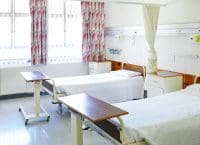“A good photograph is one that communicates a fact, touches the heart and leaves the viewer a changed person for having seen it. It is, in a word, effective.” — Irving Penn, Photographer
As I reflect on a 14-year career as a photographer before a moral upheaval that led to my journey into emergency medical services and then nursing school, I realize that there are valuable lessons to be learned about the art of nursing from the art of photography. Humanity is as fundamental and critical to a successful photograph as it is to the art of nursing. The moments between each click of the shutter or the intimacy that’s built between nurse and patient, a person bringing you into their lives, and sharing parts of themselves that they may have never revealed to another soul, is achingly beautiful thing. To have an effectual impact upon our patients, it’s critical to not just go through the nursing process, but also to connect on a personal level and leave an indelible impression on them.
Every single element in a photograph should exist for a reason, and the parts come together holistically to create a successful composition, a narrative. The same is true in nursing. The image of human health is not formed in a vacuum, but when successful, is a symphony of every part of being working in concert. When I photograph someone, I commune and communicate, no matter how brief, with the subject and their immediate environment. This resonates with what clinical nurses do. The countless trips to the bedside are really a collage of snapshots that tell a story about the patient and inevitably, about the nurse. For the subject and the photographer, the patient and the nurse, there is a mutual sense of discovery.
The photographer takes the picture, not the camera
Some of the most powerful, resonant images in the world have been captured on cameras which, by modern standards, would be considered archaic and crude. As we come to a progressive and baffling intersection of technology with medicine and see an obsession with enhanced precision and efficiency, it’s important to not forget that at the core of nursing lies the patient, the feeling-thinking being.
In the photography world, I’ve witnessed reliance on technology in producing imagery rather than an honest story. Sincerity is sacrificed for novelty. In many cases, the images produced are soulless, lacking emotional impact and power, despite their superficial glossy perfection. In the words of renowned photographer Alfred Eisenstaedt, “It is more important to click with people, than to click the shutter.” So, while adoption of new tools and practices is crucial to healthcare innovation, it is sound advice to always take the time to remember what’s on the other end of the machines.
As a photographer, I learned that one has to slow down, look around, and stop seeing the world in black and white. In photography as well as nursing, there’s the inclination to focus on the most obvious, attention-grabbing presentation. We have a tendency to oversimplify stimuli into black and white, good and bad. Heightened in stress or when time is of the essence, our vision and thoughts become narrowed. This instinctive tendency can become a hindrance when there’s more options than just run or rumble.
Every photographer has a story of how they tried to get a particular shot, moving their camera subtly, frame after frame, and just not capturing what they envisioned. It’s not until they lift their heads, take a breath, and step back, that they see a new angle or notice the subtlety and depth of the infinite shades of gray that exist between pure black and white. I think nurses can learn to step back a little from time to time to fully see the patient and grasp the bedside landscape.
Imagine beyond the image
There’s beauty in everything or there’s beauty in nothing. Photographs have captured some of the most heartbreaking moments in recent history and some of the greatest triumphs, two sides of the coin that is the human experience. In nursing we serve patients from all walks of life, from all parts of the globe, many with vastly different beliefs and values. If we are to uphold the public trust, it is our duty to be empathetic regardless of the image we have formed in our heads about the patient. In the politically charged world of today, we are too often inclined to reduce much of our world view into a series of binary choices, which can taint our actions through rote determinations of who is a “good” person and who is “bad.” It’s not difficult to care for select people, to align yourself with a group; the challenge is to be empathetic with each and every person. Authentic care will require us to imagine beyond the images we see.
Nurse are the unofficial chronicler of the first draft of human history. As I inch closer to a graduating from nursing school, I am looking forward to bearing witness to the wondrous nature of life and redemption through the lens of a registered nurse. We lose patients in the same mysterious ways we save them, but regardless of the end, I shall treasure the small moments between first meetings and last rites, for just as in photography, just as in life; it’s there that our purpose is found and celebrated. Words won’t be enough to articulate, but I’ll carry the images forever in my heart.
James Norton is a student at New York University Meyers College of Nursing in New York City.



















2 Comments.
I enjoyed reading this article James. I am a RN who enjoys birdwatching and taking photographs of birds and other wildlife.
Good luck in your studies!
Beautiful piece- Thank you, James